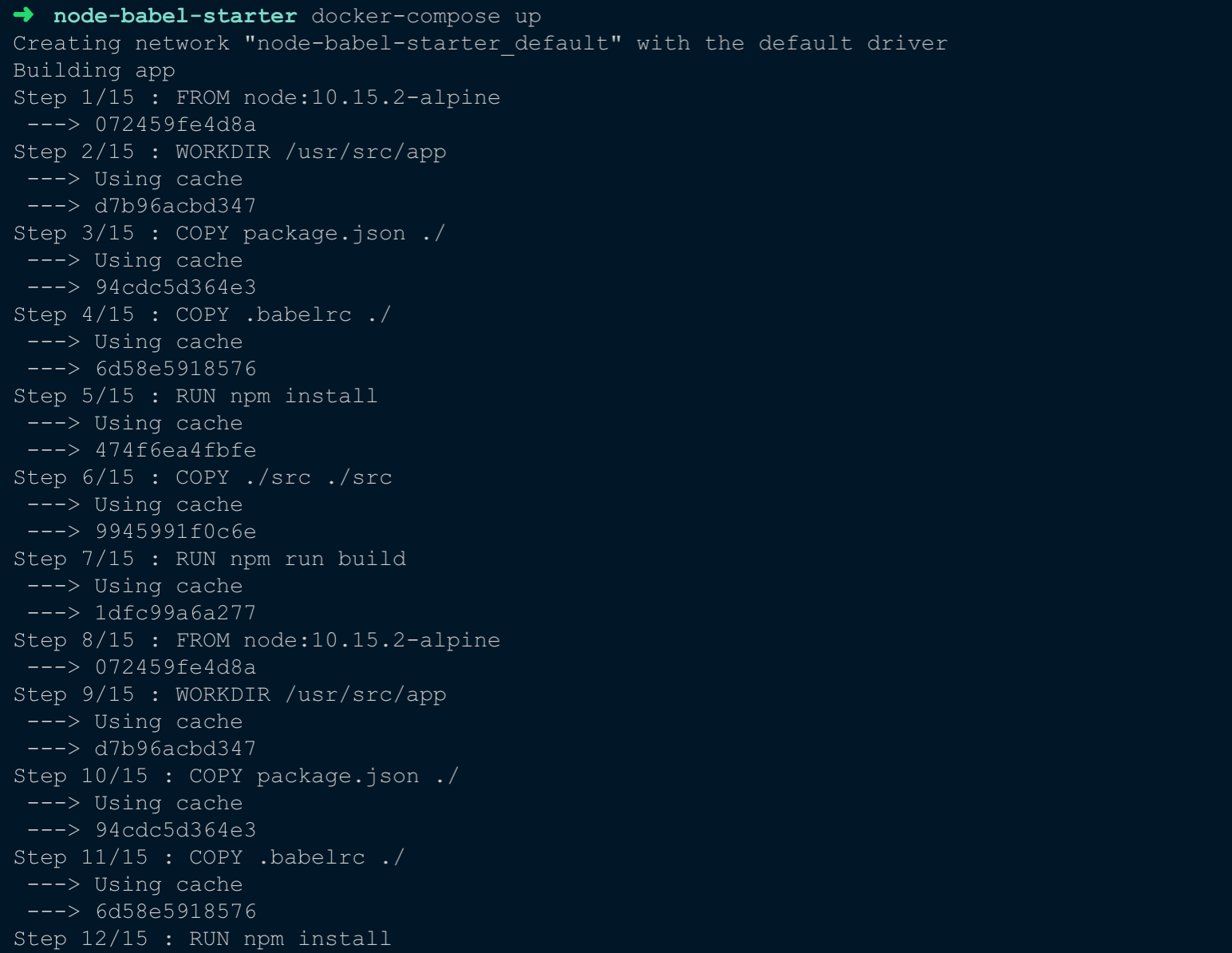Crafting multi-stage builds with Docker in Node.js
Crafting multi-stage builds with Docker in Node.js
Docker has became an inevitable tool for development. Everyday developers face new challenges for containerizing their applications.One of the important problems are containerizing the application for different enviroments. Crafting multi-stage builds with Docker in Node.js.
you can ask me, why do we need multi-stage build in node.js applications.why can’t we just build a single stage image and deploy it to server ?.
we are in a development era where Compiler and transpiler plays a vital role. especially, in javascript development environment. For Example, TypeScript and Babel.
Before multi-stage builds
Before the concept of multi-stage builds, application will have two Dockerfile. one is for development and another one is for production. this has been referred as a builder pattern. But maintaining two Dockerfiles is not ideal.
Dockerfile.dev
FROM node:10.15.2-alpine
WORKDIR /usr/src/app
COPY package.json ./
RUN npm install
COPY . .
RUN npm run devDockerfile
FROM node:10.15.2-alpine
WORKDIR /usr/src/app
COPY package.json ./
RUN npm install
COPY /usr/src/app/dist ./dist
EXPOSE 4002
CMD npm startAlthough, it solves the problem of development and production image builds. this will be expensive in the long run.it will take lots of spaces in local disk as well.
Using multi-stage builds
multi-stage build combines different environment Dockerfile into one to create a production build. For example, Staging build creates a compiled version of application source code and final build contains the compiled version deployed in the image container.
Let’s see with an example of building muti-stage for Node.js with babel and MongoDB. Complete Source is available in this repository
Create a directory and initialize the Application with Express and Babel.
Staging Build
FROM node:10.15.2-alpine
WORKDIR /usr/src/app
COPY package.json ./
COPY .babelrc ./
RUN npm install
COPY ./src ./src
RUN npm run buildAbove command, takes the node:10.15.2-alpine as base image and copies all the source code along with babel config. it builds the compiled code and stores it in dist folder in a container.
Final Build
FROM node:10.15.2-alpine
WORKDIR /usr/src/app
COPY package.json ./
COPY .babelrc ./
RUN npm install
COPY --from=0 /usr/src/app/dist ./dist
EXPOSE 4002
CMD npm startThis command, takes the compiled version from previous staging build and stores it in a new image container. the magic happens in line COPY —from=0
COPY —from=0 line copies just the build artifacts from previous stage into the new stage.
Naming build stages
Instead of referring build stages with a Number, you can name them and use it for reference. For Example, we specify the stage build with the name appbuild
Staging Docker Build
FROM node:10.15.2-alpine AS appbuild
WORKDIR /usr/src/app
COPY package.json ./
COPY .babelrc ./
RUN npm install
COPY ./src ./src
RUN npm run buildFinal docker Build
we refer the previous build with COPY —from=appbuild
FROM node:10.15.2-alpine
WORKDIR /usr/src/app
COPY package.json ./
COPY .babelrc ./
RUN npm install
COPY --from=appbuild /usr/src/app/dist ./dist
EXPOSE 4002
CMD npm startComplete Dockerfile
# Build Stage 1
# This build created a staging docker image
#
FROM node:10.15.2-alpine AS appbuild
WORKDIR /usr/src/app
COPY package.json ./
COPY .babelrc ./
RUN npm install
COPY ./src ./src
RUN npm run build
# Build Stage 2
# This build takes the production build from staging build
#
FROM node:10.15.2-alpine
WORKDIR /usr/src/app
COPY package.json ./
COPY .babelrc ./
RUN npm install
COPY --from=appbuild /usr/src/app/dist ./dist
EXPOSE 4002
CMD npm startOnce, we complete the dockerfile. create docker compose to link multiple containers together.
Create a docker-compose.yml file and add the following,
version: "3"
services:
app:
container_name: app
restart: always
build: .
environment:
- PORT=4002
ports:
- "4002:4002"
links:
- mongo
mongo:
container_name: mongo
image: mongo
volumes:
- ./data:/data/db
ports:
- "27017:27017"After that, Run the docker compose with the command,
docker-compose upyou can see the docker builds an intermediate image and use it to build a final one. Once it builds a final one,Docker deletes the intermediate images.


Complete Source code is available in this repository